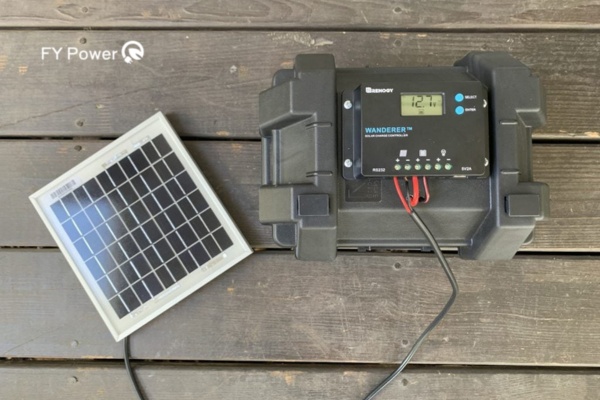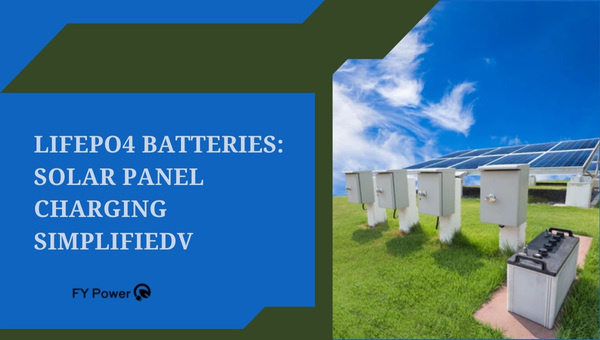Ever questioned if a small 5W solar panel can actually charge a large 12V battery? It seems like a drop in the ocean, doesn’t it? But hold on! Solar technology has evolved beyond just rooftop installations. Think smaller, more efficient solutions.
Let’s explore the details of 5W solar panel charging. We’ll see if it’s as powerful as it seems. Let’s find out if this small panel can handle the big tasks!
Absolutely! A 5W solar panel can charge a 12V battery. It won’t be rapid, or power an RV all night. Consider it ideal for maintaining battery charge or powering small devices.
Think of it as using a simple pour-over coffee maker instead of a fancy espresso machine. It’s a bit slower, but with a little patience and some good vibes, you’ll still get great results.
Key Takeaways: Discover the benefits of reading this guide.
Understanding 5W Solar Panel Charging Capabilities
Harnessing the sun’s energy often involves solar panels. These devices convert sunlight directly into usable electricity. Solar panels vary significantly in size and power output, offering diverse options for different energy needs.
A compact 5W solar panel exists. Can it effectively charge a 12V battery? Let’s explore the capabilities of these small, yet potentially powerful, panels in 2025.
Assessing the Power Output
A 5W solar panel is named for its 5-watt power output under perfect conditions. In optimal sunlight, it converts solar energy into 5 watts of electricity per hour.
Picture a 5-watt light bulb. This compact solar panel can power it during daylight. Now, consider your 12V battery, perhaps for a car or camping. It requires a more substantial power source to recharge effectively.
Here’s the process: The electricity generated by our compact solar panel travels via wires to charge your battery. It’s not a direct transfer, like simply pouring water. Because we’re dealing with electricity, intelligent management is crucial. This ensures the voltage and current remain safe for your 12V battery.
However, there’s a key point. Our solar charger achieves its peak 5-watt output only under ideal conditions. This requires a completely clear sky and direct midday sunlight. Cloud cover or use during dawn or dusk will reduce its power output.
Energy Conversion Efficiency
Let’s explore the magic of converting sunlight into usable energy! Here’s the science behind it: Solar panels contain cells crafted from special materials. When sunlight strikes these cells, it energizes them. This excitation causes the release of electrons, tiny particles carrying energy. This process is known as the photovoltaic effect.
It might sound complex, but it’s straightforward. Moving electrons create an electric current. We then channel this current through wires. This powers useful applications, such as charging batteries!
However, there’s a catch. Solar panels don’t convert all sunlight into electricity. Some energy is lost as heat. Imperfect materials also hinder electron capture. Currently, most panels convert only 15-20% of sunlight into usable power. This percentage represents their efficiency.
Our compact 5W solar panel is a true workhorse. Expect similar efficiency to larger panels. However, its small size means we focus on long-term performance. Can it reliably charge your 12V battery over many sunny days?
Charging efficiency is crucial. Suboptimal conditions, like cloudy winter days, reduce solar energy conversion. This impacts overall charging time.
Solar panels demonstrate their value over the long haul. They consistently add power to your batteries. Think of them as reliable, not rapid, chargers. Slow and steady truly wins the race here! That’s a quick look at the fascinating world of solar charging!
You Might Also Like: Westinghouse Generators: Who Manufactures Them and Where? (2025 Update)
Preparing to Charge Your 12V Battery with a Solar Panel

Let’s explore how to charge your 12V battery using solar power. First, let’s prepare for this exciting process. We’re harnessing the sun’s energy to power your battery. Isn’t that amazing?
Ready to begin? First, gather the essential components. We require specific items to ensure this solar charging system functions correctly.
Materials Needed for Solar Charging
Before charging, let’s ensure we have everything ready:
Think of it this way: each component is vital, fitting perfectly like puzzle pieces in a complete picture.
Essential Tools for Setup
Let’s discuss essential tools. Even superheroes rely on their gadgets!
Safety first, everyone! Always use tools with caution and care.
You’re all set with these tools and materials!
You Might Also Like: Explore RV appliance power usage for camping
Step-by-Step Guide to Charging Your Battery
Want to charge your 12V battery using a 5W solar panel? This guide simplifies the process. Follow each step carefully for optimal and safe results.
Step 1: Connect the 12V Battery to the Solar Charge Controller

Safety is paramount when installing a solar system. Always power down all components before connecting your 12V battery to the solar charge controller. Then, using your wires, proceed with the following steps:
That’s all there is to it! However, proceed carefully. Ensure every connection is both accurate and firm.
Step 2: Connect the 5W Solar Panel to the Solar Charge Controller
Time to connect your 5W solar panel! Position it to capture direct sunlight. Optimal sunlight is crucial for maximum power generation.
Errors are inevitable, but careful planning prevents future issues.
Step 3: Testing Your New Setup
Ready to go? Excellent! Let’s verify our setup is functioning correctly before we finalize everything.
Rigorous testing validates our work’s integrity. Any issues detected require immediate re-evaluation of all connections.
So, that’s how you charge a battery using optimized solar power. It’s straightforward when you simplify it! Prioritize safety, verify each step, and soon the sun will be powering your devices.
Understanding Time Frames for Charging Activities
Setting up a new charging system? You’re likely wondering about charging times. It’s key to have realistic expectations. Many factors influence how long it takes to charge your battery. Let’s explore charging times for a 12V battery using a 5W solar panel.
How Long Will It Take?
Let’s calculate the charging time for a 12V battery using a 5W solar panel. We’ll break down the math step-by-step.
Let’s imagine ideal conditions: perfect sunlight and zero energy waste. This isn’t realistic, but the calculation is: Battery Amp-hours / Panel Wattage = Charging Time.
Consider this illustration:
A 50Ah battery provides 10 hours of power per watt (50Ah / 5W = 10 hours/watt).
Our solar panel generates just one watt each hour. Therefore, we multiply that hourly output by five to get the total for five hours.
At 10 hours of sunlight per watt, a 5-watt panel needs 50 hours to achieve full sun equivalent.
In reality, considering potential setbacks and less-than-ideal weather, it might take over twice as long.
Timing Challenges & Solutions
Let’s face it: perfect conditions are rare. Here’s how I handle common photography challenges in 2025:
Grasping these key aspects will help you maximize the efficiency of your 5W solar panel charging setup, regardless of the conditions. Stay updated for 2025!
Choosing an Appropriate Size Solar Panel

Choosing the correct solar panel size is crucial for optimal performance. Your energy requirements dictate the ideal panel size. This choice significantly impacts your solar power system’s effectiveness. An undersized panel may struggle to adequately charge your devices. Conversely, an oversized panel can lead to wasted resources and unnecessary expenses.
Determining What Size You Need?
Consider the devices you’ll run using solar power. Each device requires a specific power level. Here’s a guide to determine the appropriate solar panel size for your needs:
Need more power for larger 12V batteries or numerous devices? Explore in-depth solar charging fundamentals for advanced guidance.
When Is A Bigger Panel Necessary?
Sometimes, higher wattage solar panels are the better choice. Here are scenarios where increased power is beneficial:
In 2025, pinpointing your exact energy requirements is key to selecting the perfect solar power system for your home or business!
Conclusion
In 2025, let’s explore charging a 12V battery using a 5W solar panel. This guide simplifies the process. We’ll cover solar panel output and charging time. This knowledge is key for anyone using solar energy.
In 2025, maximizing energy efficiency and solar power is crucial. We investigated essential materials and outlined clear steps. This covers everything from initial connections to final testing procedures.

